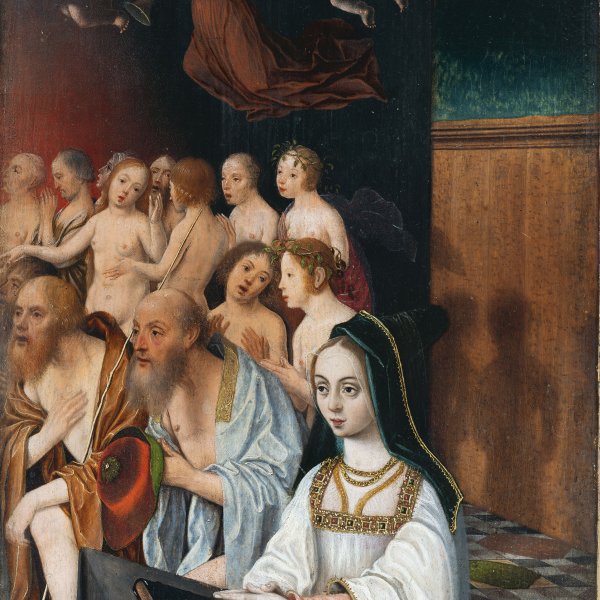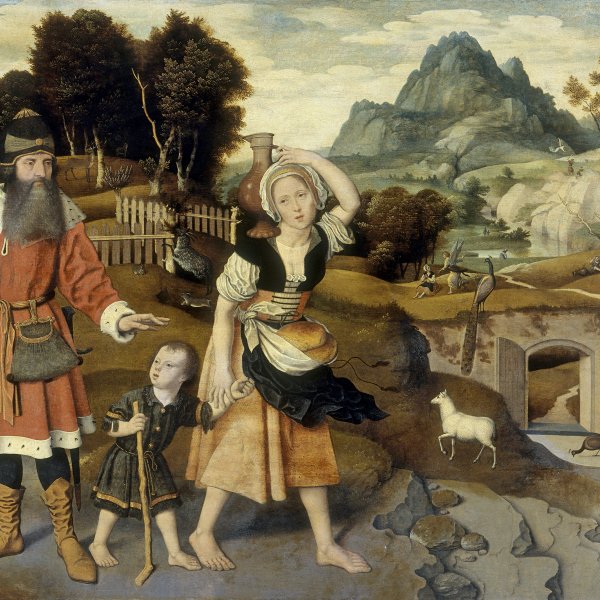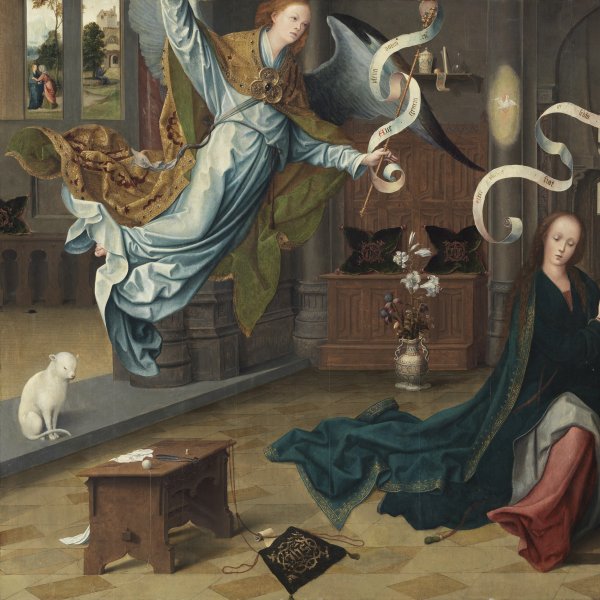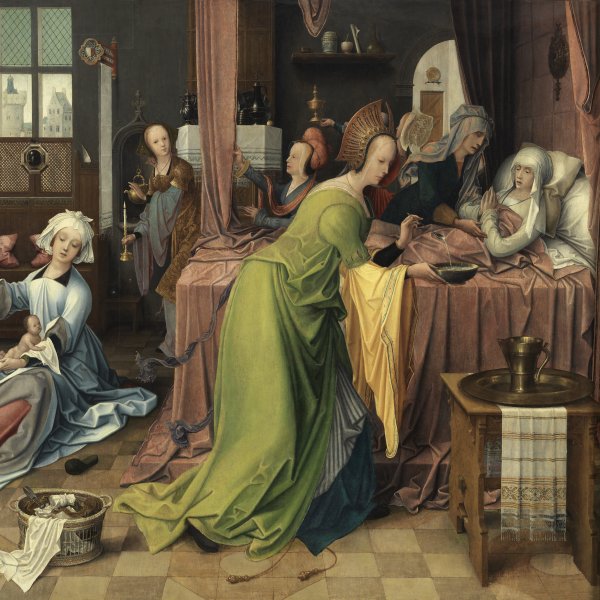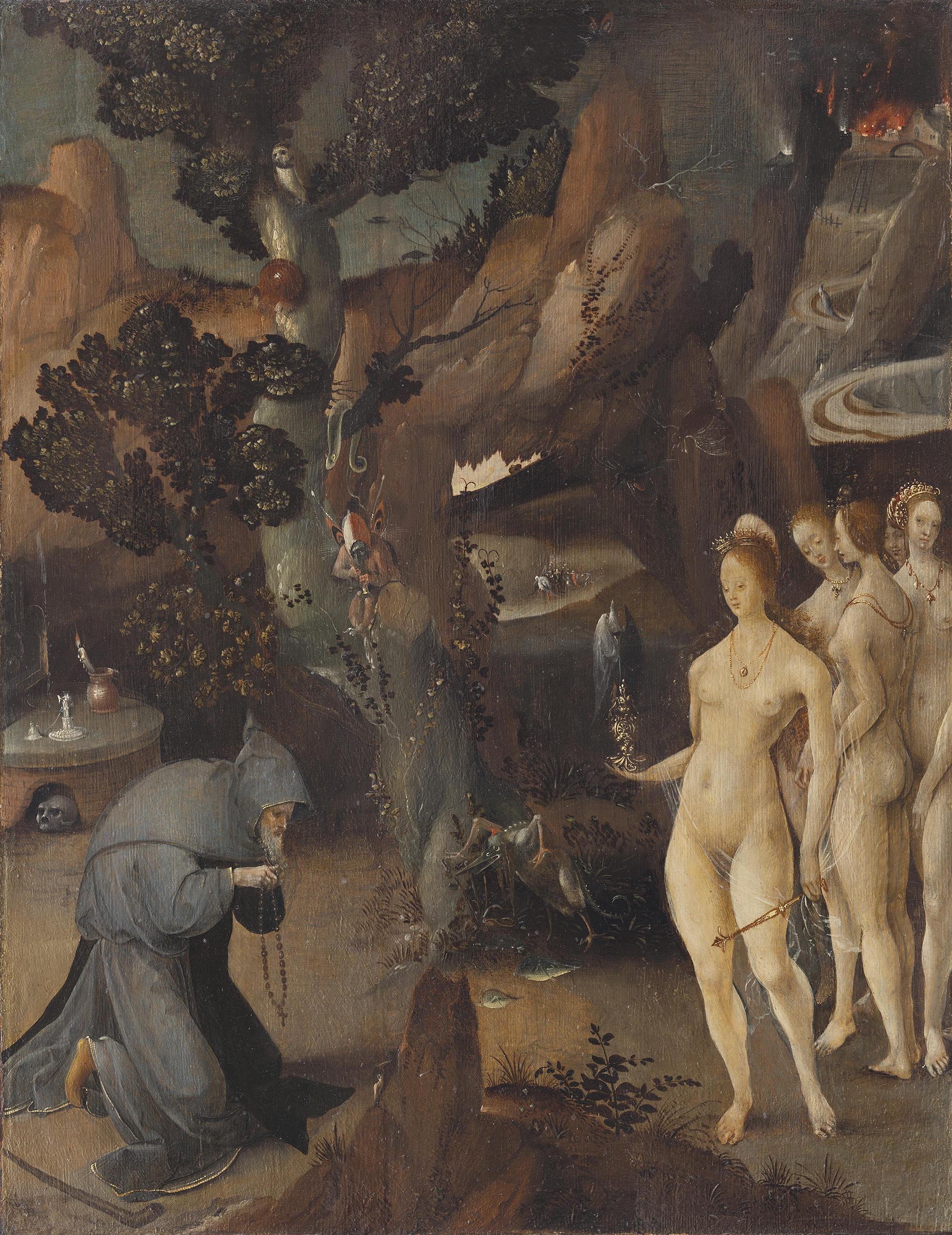The Temptation of Saint Anthony
Jan Wellens de Cock was a Flemish painter working in the 16th century. He was associated with the Antwerp Mannerists along with artists such as Jan de Beer. In the present panel Cock depicts Saint Anthony during his retreat to the desert where he was tempted by the Devil. The saint is shown kneeling in an attitude of prayer and wearing a monk’s habit. On his right is a group of naked women who stand out for their luminous pallor and who represent carnal temptation. They display themselves to the saint, covered only by a thin veil that reveals their bodies. While the scene alludes to Saint Anthony’s chastity, it is certainly not devoid of erotic connotations. The landscape in which the episode is set evokes a fantastical universe with imaginary animals that lie in wait for the saint and which recall the work of Hieronymous Bosch.
NR
This panel of The Temptation of Saint Anthony has been in the Collection since 1928. The only previous known owner is Hans Wendland, in whose collection it was to be found in Basel in 1925, from where it entered the Dutch art market with Goudstikker, who sold it to the Rohoncz collection. The panel was attributed to Cock in the catalogue of the Munich exhibition of 1930 and was previously included in a text on the artist by Jan G. van Gelder in 1927 when it was with Goudstikker. Van Gelder referred to it as an unpublished work by this problematic painter.
Saint Anthony Abbot was a popular saint in the Middle Ages whose story is recounted in various sources including The Golden Legend by Jacopo da Voragine. He was also the subject of popular veneration for his healing powers, particularly for contagious diseases such as leprosy, plague, syphilis and others. Saint Anthony was born in Egypt and the Golden Legend recounts how he sold his possessions, divided the money among the poor and retired to the desert to live the life of a hermit, tempted by the Devil. The saint is generally depicted as an old man dressed in a hooded habit and holding a t-shaped cross. Other attributes may include a rosary, as seen here, a pig or a bell. The Order of the Hospital Brothers of Saint Anthony, founded in the 11th century, was one of the main promoters of his cult. Throughout his hermit’s existence in the desert Anthony was tormented by the Devil, a subject that became one of the most popular scenes of his life for depictions in art and the one chosen here by Cock. Lucifer tests the saint with Lust, one of the Seven Deadly Sins, represented in the form of various women who display themselves to the saint, covered only in light veils. In addition to its religious connotations associated with chastity, the scene contains evident erotic and sensual elements that undoubtedly contributed to the popularity of this episode.
As in other works attributed to this painter, Cock placed considerable importance on the landscape setting. Saint Anthony in his habit and holding his rosary is seen kneeling on the left, fervently praying before a crucifix to defeat the evil that has presented itself to him in female form. The woman that leads the group holds a sceptre and a precious object in her other hand. Both this figure and the others behind her are adorned with rich jewels in their hair and around their necks. The setting includes a fantastical range of hybrid animals that surround and menace the saint, including the one in the central tree trunk, all suggestive of the world of Hieronymous Bosch. The prevailing earth and grey tones counterbalance the warm flesh tones of the nude women on the right, which further emphasise their figures.
Mar Borobia





